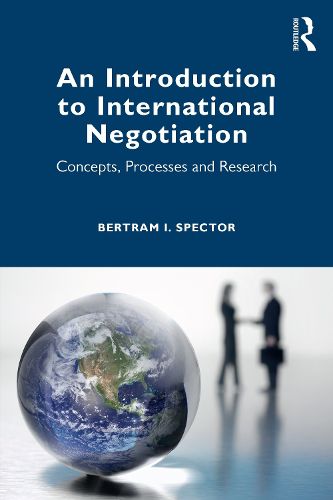Readings Newsletter
Become a Readings Member to make your shopping experience even easier.
Sign in or sign up for free!
You’re not far away from qualifying for FREE standard shipping within Australia
You’ve qualified for FREE standard shipping within Australia
The cart is loading…






This textbook provides a comprehensive introduction to the international negotiation system - its key elements and processes, what major issues and challenges it faces, and its impacts on international relations. As a major catalyst of global dynamics, negotiation is used to resolve conflicts and promote cooperation peacefully. It is important to understand how it works.
First, the book analyzes the principal factors that interact to move the negotiation system forward - the issues and context, actors, structures, strategies, and outcomes. Then, the discussion considers the four basic subprocesses of international negotiation - getting to the table, conducting negotiations, developing implementation plans, and continuing negotiations in the post-agreement period. Relevant research is presented in each chapter to elaborate on these dynamics and offer case studies of negotiations addressing intrastate conflict, the environment, terrorism, anti-corruption and good governance, and post-agreement issues. In addition, the book examines major conflictual conundrums currently facing the world in the Middle East and Ukraine to explore opportunities for negotiated solutions.
Providing a solid mix of theory, research, and real-world cases that offers readers a comprehensive appreciation of the field and how it is used on a practical level, this is an excellent basic text for courses on international relations, peace studies, conflict resolution, and international negotiations, and a useful resource for researchers, policymakers, and practitioners.
$9.00 standard shipping within Australia
FREE standard shipping within Australia for orders over $100.00
Express & International shipping calculated at checkout
This textbook provides a comprehensive introduction to the international negotiation system - its key elements and processes, what major issues and challenges it faces, and its impacts on international relations. As a major catalyst of global dynamics, negotiation is used to resolve conflicts and promote cooperation peacefully. It is important to understand how it works.
First, the book analyzes the principal factors that interact to move the negotiation system forward - the issues and context, actors, structures, strategies, and outcomes. Then, the discussion considers the four basic subprocesses of international negotiation - getting to the table, conducting negotiations, developing implementation plans, and continuing negotiations in the post-agreement period. Relevant research is presented in each chapter to elaborate on these dynamics and offer case studies of negotiations addressing intrastate conflict, the environment, terrorism, anti-corruption and good governance, and post-agreement issues. In addition, the book examines major conflictual conundrums currently facing the world in the Middle East and Ukraine to explore opportunities for negotiated solutions.
Providing a solid mix of theory, research, and real-world cases that offers readers a comprehensive appreciation of the field and how it is used on a practical level, this is an excellent basic text for courses on international relations, peace studies, conflict resolution, and international negotiations, and a useful resource for researchers, policymakers, and practitioners.